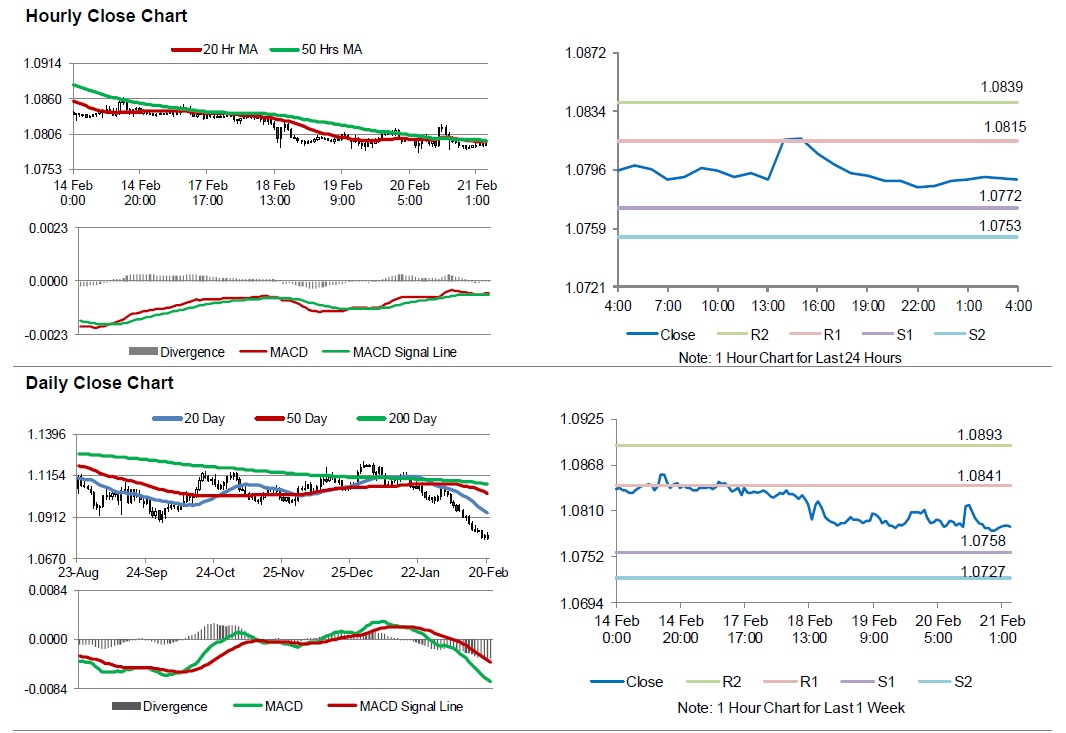For the 24 hours to 23:00 GMT, the EUR declined 0.20% against the USD and closed at 1.0786.
Data showed that Euro-zone’s flash consumer confidence index unexpectedly rose to a level of -6.6 in February, compared to a level of -8.1 in the previous month. Separately, in Germany, the producer price index (PPI) unexpectedly climbed by 0.2% on an annual basis in January, compared to a drop of 0.2% in the previous month. Meanwhile, the GfK consumer confidence index eased to a level of 9.8 in March, in line with market consensus and compared to a level of 9.9 in the prior month.
In the US, the Philadelphia Fed manufacturing index unexpectedly advanced to 36.7 in February, hitting its highest level in three years and driven by a rise in demand. In the prior month, the index had recorded a reading of 17.0. On the other hand, the seasonally adjusted initial jobless claims climbed to 210.0K in the week ended 14 February 2020, at par with market forecast and compared to a revised reading of 206.0K in the previous week.
In the Asian session, at GMT0400, the pair is trading at 1.0790, with the EUR trading slightly higher against the USD from yesterday’s close.
The pair is expected to find support at 1.0772, and a fall through could take it to the next support level of 1.0753. The pair is expected to find its first resistance at 1.0815, and a rise through could take it to the next resistance level of 1.0839.
Moving ahead, investors would focus on the Markit manufacturing and services PMIs for February, slated to release across the euro area along with Euro-zone’s consumer price index (CPI) for January, due in a few hours. Later in the day, the US Markit manufacturing and services PMIs for February as well as existing home sales data for January, will keep investors on their toes.
The currency pair is trading below its 20 Hr and 50 Hr moving averages.

